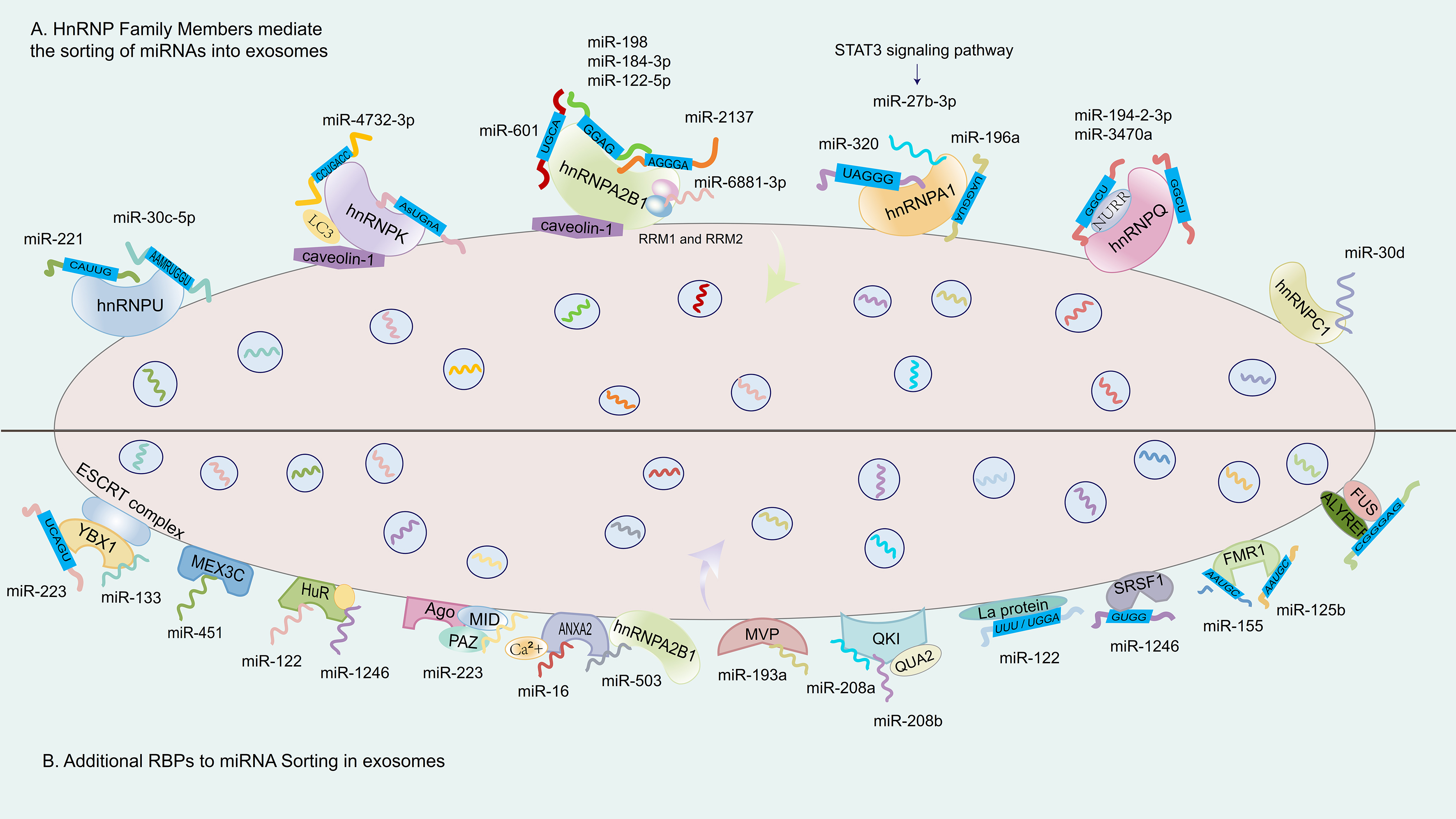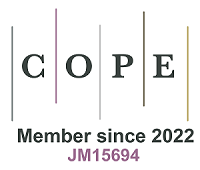fig3
Figure 3. RBPs and miRNA sequences in the regulation of miRNA sorting into exosomes. (A) illustrates several representative RBPs from the hnRNP family, including hnRNPA2B1, hnRNPQ, hnRNPA1, and hnRNPU. These proteins bind to miRNAs by recognizing specific EXOmotifs (such as GGAG and CAUUG). This binding depends on the RRMs of the RBPs and may also be regulated by signaling pathways, such as the STAT3 signaling pathway; (B) shows that other RBPs, such as YBX1, HuR, and MVP, also form complexes with their target miRNAs by recognizing specific EXOmotifs. These complexes are directed to MVBs via intracellular transport mechanisms. Some RBPs, such as YBX1, can interact with the ESCRT machinery, thereby facilitating the selective loading of specific miRNAs into ILVs, which are ultimately released as exosomes. RBP: RNA-binding protein; hnRNP: heterogeneous nuclear ribonucleoprotein; hnRNPA2B1: heterogeneous nuclear ribonucleoprotein A2B1; hnRNPQ: heterogeneous nuclear ribonucleoprotein Q; hnRNPA1: heterogeneous nuclear ribonucleoprotein A1; hnRNPU: heterogeneous nuclear ribonucleoprotein U; EXOmotif: exosomal motif; STAT3: signal transducer and activator of transcription 3; YBX1: Y-box binding protein 1; HuR: human antigen R; MVP: major vault protein; MVB: multivesicular body; ESCRT: endosomal sorting complex required for transport; ILV: intraluminal vesicle; LC3: microtubule-associated protein 1 light chain 3; NURR: nuclear receptor receptor family.











